Search
Products tagged with 'boiler tubes'
View as
Sort by
Display
per page
06465 BOILER INSPECTION TECHNIQUES: Tools and Degradation Identification
Product Number:
51300-06465-SG
ISBN:
06465 2006 CP
Publication Date:
2006
$20.00
07443 Stress Assisted Corrosion in Boiler Tubes - Failure Analysis
Product Number:
51300-07443-SG
ISBN:
07443 2007 CP
Publication Date:
2007
$20.00
07450 FAILURE ANALYSIS AND INVESTIGATION METHODS FOR BOILER TUBE FAILURES
Product Number:
51300-07450-SG
ISBN:
07450 2007 CP
Publication Date:
2007
$20.00
51318-11361-Scale And Corrosion Control Mechanisms for Condensate Feedwater and Boilers in Industrial Systems
Product Number:
51318-11361-SG
Publication Date:
2018
$20.00
NACE Publication 7H100-2011-SG, “Evaluation of Boiler Tube Deposit Mass Loading (Deposit Weight Density) Methodology"
Product Number:
24206-SG
ISBN:
7H100
Publication Date:
2011
$109.00
Severe Under-Deposit Corrosion Inducing Hydrogen Embrittlment in Water Wall Tubes
Product Number:
51317--8889-SG
ISBN:
8889 2017 CP
Publication Date:
2017
$20.00
TM0199-2013-SG "Standard Test Method for Measuring Deposit Mass Loading (“Deposit-Weight-Density”) Values for Boiler Tubes by the Glass-Bead-Blasting Technique"
Product Number:
21236-SG
ISBN:
1-57590-082-3
Publication Date:
2013
$109.00
TM0199-HD1999-SG Standard Test Method for Measuring Deposit Mass Loading (“Deposit-Weight-Density”) Values for Boiler Tubes by the Glass-Bead-Blasting Technique-HD1999
Product Number:
21236-HD1999
ISBN:
1-57590-082-3
Publication Date:
1999
$179.00
Weld Jointing Influence on Boiler Tube Sheet Integrity
Product Number:
MPWT19-14366
Publication Date:
2019
$0.00









